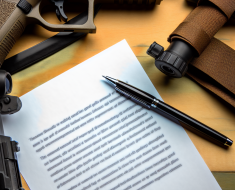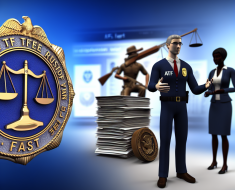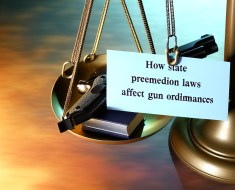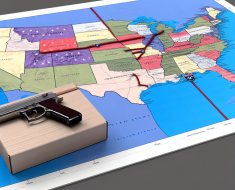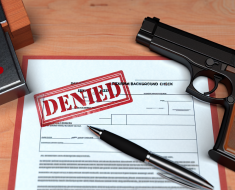The Importance of Firearm Safety Courses in Law Compliance

Firearm ownership is a significant responsibility that comes with numerous legal and ethical obligations. Across many jurisdictions, the possession and use of firearms are governed by strict laws designed to ensure public safety. One of the most effective ways to promote responsible firearm ownership and compliance with these laws is through comprehensive firearm safety courses. These courses provide essential education on safe handling, storage, and legal requirements, reducing accidents and enhancing community safety.
Understanding the Legal Framework Surrounding Firearm Ownership
The regulatory landscape for firearms varies widely around the world, but many countries share common principles aimed at preventing misuse and ensuring responsible ownership. In the United States, for example, federal laws such as the Gun Control Act of 1968 and the Brady Handgun Violence Prevention Act establish foundational regulations. Additionally, states often have their own laws concerning background checks, waiting periods, concealed carry permits, and mandatory safety training.
Many jurisdictions require individuals to complete a certified firearm safety course before obtaining a license or permit to carry a firearm. These requirements reflect a recognition that knowledge and training are crucial components in minimizing risks associated with firearms.
- Federal Requirements: Background checks and restrictions on certain categories of individuals.
- State-Level Variations: Licensing procedures, mandatory training, waiting periods.
- Local Ordinances: Additional regulations such as storage laws or prohibited zones.
Without adequate training and education, gun owners may inadvertently violate these laws or engage in unsafe practices that lead to accidents or criminal charges.
The Role of Firearm Safety Courses in Promoting Law Compliance
Firearm safety courses serve as a bridge between law enforcement policies and responsible gun ownership. They provide prospective and current gun owners with the knowledge necessary to navigate complex legal requirements while emphasizing practical skills for safe handling.
These courses typically cover:
- Legal Responsibilities: Understanding federal, state, and local firearm laws.
- Safe Handling Techniques: Proper loading, unloading, carrying, and shooting practices.
- Storage Practices: Secure storage methods to prevent unauthorized access.
- Crisis Management: How to respond safely during emergencies involving firearms.
A well-structured course ensures that participants are aware not only of how to operate their firearms safely but also of their legal obligations. This dual focus helps prevent unintentional law violations such as carrying firearms in restricted areas or mishandling weapons leading to accidental discharges.
The Impact of Firearm Safety Education on Accident Reduction
The correlation between firearm education and accident reduction is well-documented. According to a study published by the National Safety Council in 2020, households where members had completed firearm safety courses reported significantly fewer accidental discharges and injuries compared to those without formal training.
Key statistics include:
- A 40% reduction in unintentional shootings in homes where owners completed certified safety courses.
- A notable decrease in child-related firearm incidents when parents underwent proper training on safe storage techniques.
- An overall improvement in emergency response actions among trained individuals during critical incidents involving firearms.
A compelling example is the state of California, which mandates firearm safety courses before issuing concealed carry permits. Since implementation, data from the California Department of Justice indicates a steady decline in negligent discharge incidents among permit holders. This highlights how education can directly influence safer behaviors and compliance with laws designed to protect communities.
Case Studies Demonstrating Successful Integration of Firearm Training Programs
Several jurisdictions have successfully integrated firearm safety courses into their regulatory frameworks with positive outcomes. Two notable examples include:
1. Texas License to Carry (LTC) Program
The Texas LTC program requires applicants to complete a comprehensive handgun proficiency course covering both practical shooting skills and legal responsibilities. The program’s success is evident in its low rates of permit revocation due to negligent conduct or legal violations. A report from the Texas Department of Public Safety showed that over 90% of LTC holders maintained good standing without any firearm-related offenses within five years post-certification.
2. Australia’s National Firearms Agreement (NFA)
Following tragic mass shootings in the late 1990s, Australia implemented stringent gun control measures including mandatory safety training for all gun owners. The NFA mandates comprehensive firearm safety education as part of licensing procedures nationwide. Since then, Australia has witnessed a dramatic reduction in gun-related homicides and accidental shootings — a testament to how combining regulation with education fosters safer communities.
The Broader Social Benefits of Firearm Safety Courses
Beyond individual compliance with laws, firearm safety courses contribute positively at community levels by fostering responsible attitudes toward gun ownership. Some broader social benefits include:
- Enhanced Public Confidence: When citizens understand that gun owners are trained professionals aware of their responsibilities, public trust increases regarding lawful firearm possession.
- Cultural Shift Towards Safety: Normalizing education encourages peer-to-peer advocacy for safe practices within social groups and families.
- Support for Law Enforcement Efforts: Educated gun owners reduce strain on police resources by minimizing accidental calls related to unsafe handling or misunderstandings about lawful carry zones.
This



